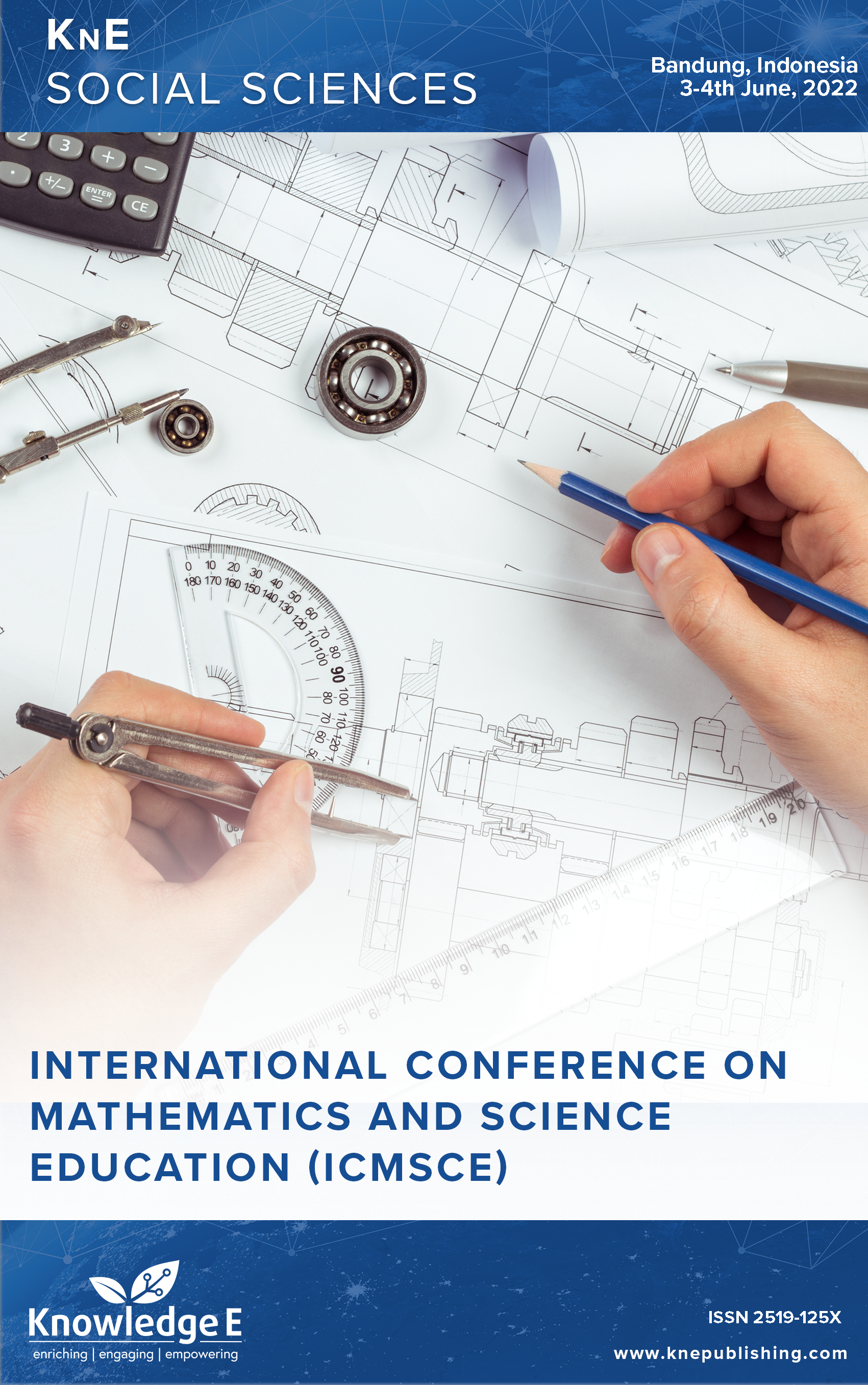Relationship Between Learning Style and Critical Thinking Skill Through Hybrid Learning on the Topic of Work and Energy
DOI:
https://doi.org/10.18502/kss.v9i13.16016Abstract
Critical thinking skill is one of the abilities that must be possessed by students in the 21st century. Students are currently not trained to always think critically, which could be caused by the learning styles of the students themselves. The learning style here is a combination of a person’s state of being able to absorb, be able to organize, and be able to process information. This study aims to analyze the implementation and relationship of learning styles with critical thinking skills after the hybrid learning model is applied to the work and energy materials. The method used correlation analysis with product-moment correlation. The sample of this research was the students of class X MIPA, totaling 16 students who were selected by using the saturated sampling technique. The instruments used were a learning style questionnaire (an authentic assessment based on teaching and learning trajectory) with student activity sheet (AABTLT with SAS), and critical thinking skills test questions. The results showed that the average percentage of learning implementation using the hybrid learning model was 91% with a very effective category. The results of the hypothesis test using the product-moment correlation test, then count (0.110) < table (0.497) or count less than stable, so Ha is rejected and H0 is accepted. The results of this study can conclude that there is no significant relationship between learning styles and critical thinking skills of students of class X MIPA on the matter of work and energy.
Keywords: learning style, critical thinking skill, hybrid learning
References
Finn A, Bucceri M. “A case study approach to blended learning,” (2008).
Heinze A, Procter C. The significance of the reflective practitioner in blended learning [IJMBL]. Int J Mobile Blended Learn. 2010;2(2):18–29. DOI: https://doi.org/10.4018/jmbl.2010040102
Heinze A, Procter C, Scott B. Use of conversation theory to underpin blended learning. International Journal of Teaching and Case Studies. 2007;1(1–2):108–20. DOI: https://doi.org/10.1504/IJTCS.2007.014213
DePorter B, Hernacki M. Quantum learning: Membiasakan belajar nyaman dan menyenangkan (terjemahan Alwiyah Abdurrahman. Kaifa, Bandung, 2011.
DePorter B. Quantum teaching. Bandung: PT Mizan Publika; 2014.
Bire AL, Geradus U, Bire J. “Pengaruh gaya belajar visual, auditorial, dan kinestetik terhadap prestasi belajar siswa.,” Jurnal kependidikan. vol. 44, no. 2, p. 2014.
Odendaal A. (Mis) matching perceptual learning styles and practicing behavior in tertiary level Western Classical instrumentalists. Psychol Music. 2016;44(3):353–68. DOI: https://doi.org/10.1177/0305735614567933
Wahyuni Y. “Identifikasi gaya belajar (visual, auditorial, kinestetik) mahasiswa pendidikan matematika Universitas Bung Hatta.,” Jurnal Penelitian dan Pembelajaran Matematika. vol. 10, no. 2, p. 2017. https://doi.org/10.30870/jppm.v10i2.2037. DOI: https://doi.org/10.30870/jppm.v10i2.2037
Anisimov AV, Mikhailova MA, Uvarova EA. Modern approaches to the development of marine antifouling coatings. Inorg Mater: Appl Res. 2019;10(6):1384–9. DOI: https://doi.org/10.1134/S2075113319060029
Mahanal S, Zubaidah S, Sumiati ID, Sari TM, Ismirawati N. RICOSRE: A learning model to develop critical thinking skills for students with different academic abilities. Int J Instr. 2019;12(2):417–34. DOI: https://doi.org/10.29333/iji.2019.12227a
Ghofur A, Nafisah D, Eryadini N. Gaya belajar dan implikasinya terhadap kemampuan berfikir kritis mahasiswa. Journal An-Nafs: Kajian Penelitian Psikologi. 2016;1(2):166– 84. DOI: https://doi.org/10.33367/psi.v1i2.285
Rokhimah S, Rejeki S. Kemampuan berpikir kritis siswa berdasarkan gaya belajar pada pembelajaran dengan model 4K. Kontinu: Jurnal Penelitian Didaktik Matematika. 2018;2(1):1–13. DOI: https://doi.org/10.30659/kontinu.2.1.1-13
Hughes G. Using blended learning to increase learner support and improve retention. Teach High Educ. 2007;12(3):349–63. DOI: https://doi.org/10.1080/13562510701278690
Willingham DT, Hughes EM, Dobolyi DG. The scientific status of learning styles theories. Teach Psychol. 2015;42(3):266–71. DOI: https://doi.org/10.1177/0098628315589505
Nurbaeti N, Nuryanti S, Pursitasari ID. Hubungan gaya belajar dengan keterampilan berpikir kritis dan kemampuan kognitif siswa pada mata pelajaran kimia di kelas x smkn 1 bungku tengah. Mitra Sains. 2015;3(2):24–33.
Nurasia N. Pengaruh gaya belajar terhadap keterampilan berpikir kritis peserta didik kelas XI IPA SMA Negeri 3 palopo pada materi pokok larutan asam basa. Dinamika. 2015;6(2):39–46.
Setiana DS, Purwoko RY. Analisis kemampuan berpikir kritis ditinjau dari gaya belajar matematika siswa. Jurnal Riset Pendidikan Matematika. 2020;7(2):163–77. DOI: https://doi.org/10.21831/jrpm.v7i2.34290
Hwang A. Online and hybrid learning. J Manage Educ. 2018;42(4):557–63. DOI: https://doi.org/10.1177/1052562918777550
Fraenkel JR, Wallen NE, Hyun HH. How to design and evaluate research in education. New York: Mc. GrawHill; 2012.
Andreou C, Papastavrou E, Merkouris A. Learning styles and critical thinking relationship in baccalaureate nursing education: a systematic review. Nurse Educ Today. 2014 Mar;34(3):362–71. DOI: https://doi.org/10.1016/j.nedt.2013.06.004
Wessel J, Williams R. Critical thinking and learning styles of students in a problembased, master’s entry-level physical therapy program. Physiother Theory Pract. 2004;20(2):79–89. DOI: https://doi.org/10.1080/09593980490453039
Lambertus L. Pentingnya melatih keterampilan berpikir kritis dalam pembelajaran matematika di SD. Forum Pendidikan. 2009;28(2):136–42.
Cáceres M, Nussbaum M, Ortiz J. “Integrating critical thinking into the classroom: A teacher’s perspective,” Thinking Skills and Creativity. vol. 37, p. 2020. DOI: https://doi.org/10.1016/j.tsc.2020.100674
Saleh SE. “Critical thinking as a 21st century skill: conceptions, implementation and challenges in the EFL classroom.” European Journal of Foreign Language Teaching. p. 2019.

